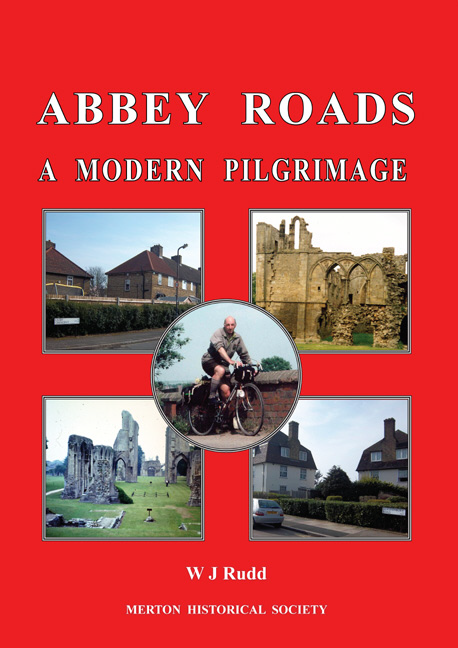Author Archive: Peter Hopkins
Merton Mail
The Society’s e-newsletter is published monthly, lists and reviews MHS and other organisations’ events and reports on local topical issues. Selected articles are reproduced here.
A Child’s Eye View of Mitcham:1922-1934
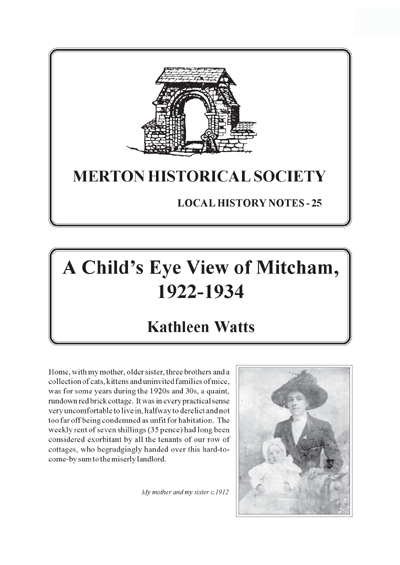
We are very grateful to Kathleen Watts for letting us publish her childhood recollections. Kathleen lived in one of the cottages which formed Berkeley Place, built on what had been Killicks Yard adjoining Berkeley House and Berkeley Cottage in London Road, Mitcham.
A History of Fry’s Metal Foundries and the Tandem Works
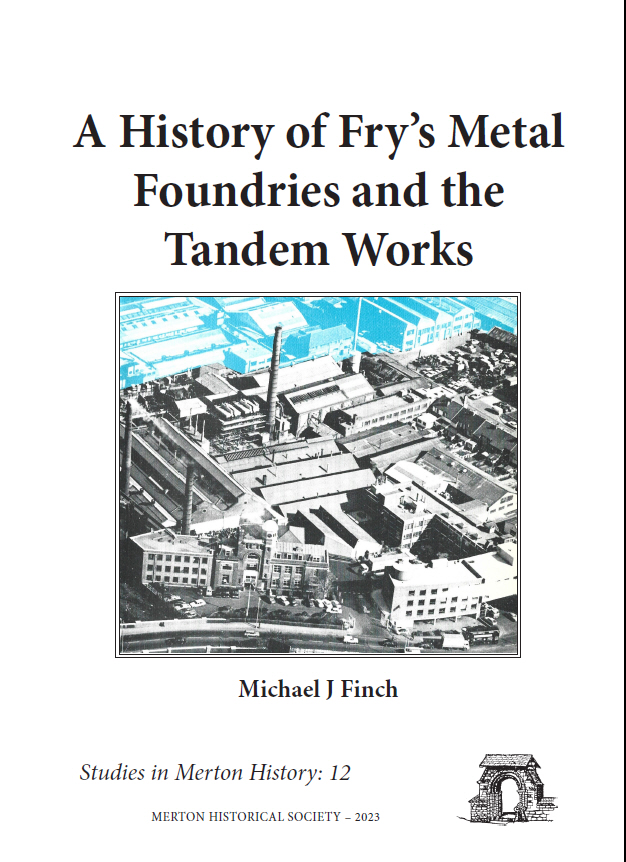 Studies in Merton History 12: by Michael J Finch
Studies in Merton History 12: by Michael J Finch
This account focuses primarily on the foundation of Fry’s, the companies that existed long before Fry’s that shaped Fry’s future, and the people who made it happen through belief, determination and hard work, not to mention the willingness to take chances. It is a fascinating story of success and a rise from nothing that justifies the effort to tell the story, because there is little information otherwise available. The fact that information is scant is the biggest surprise, given the enormous impact Fry’s Metals had on the print metal industry in those early days, the number of people they employed, not just at the Tandem Works, but also at the branch foundries and overseas, and the impact of the company on local communities.
A History of Lord Nelson’s Merton Place
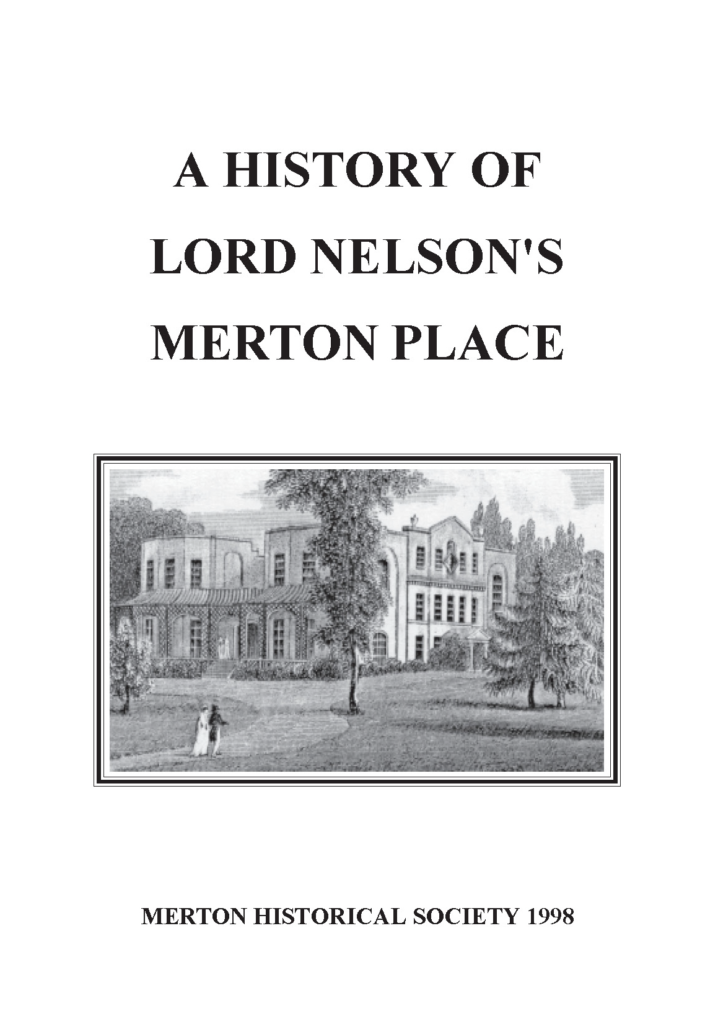
The author in his introduction gives generous credit to the late John Wallace upon whose notes this useful booklet is largely reliant. Between them they have extended our knowledge of Nelson’s Merton estate. The booklet (of 47 pages including index) takes us back to the late 17th century when the land was unbuilt. By 1753 there was a substantial building on the land and this was developed by Sir Richard Hotham, the ‘founder’ of modern day Bognor Regis in West Sussex.
A Mitcham Childhood Remembered 1926-45

Pamela Starling’s family lived near Mitcham Common. She describes daily life, school and special occasions, as well as wartime dangers and evacuation.
A Priory Founded: Sheriff Gilbert at Merton
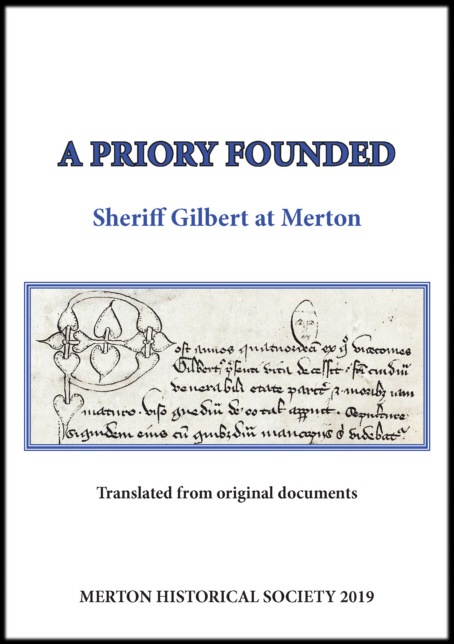
The first complete translation of the contemporary account of the founding of Merton Priory by Gilbert, sheriff of Surrey, together with an introductory essay.
A Priory Revealed
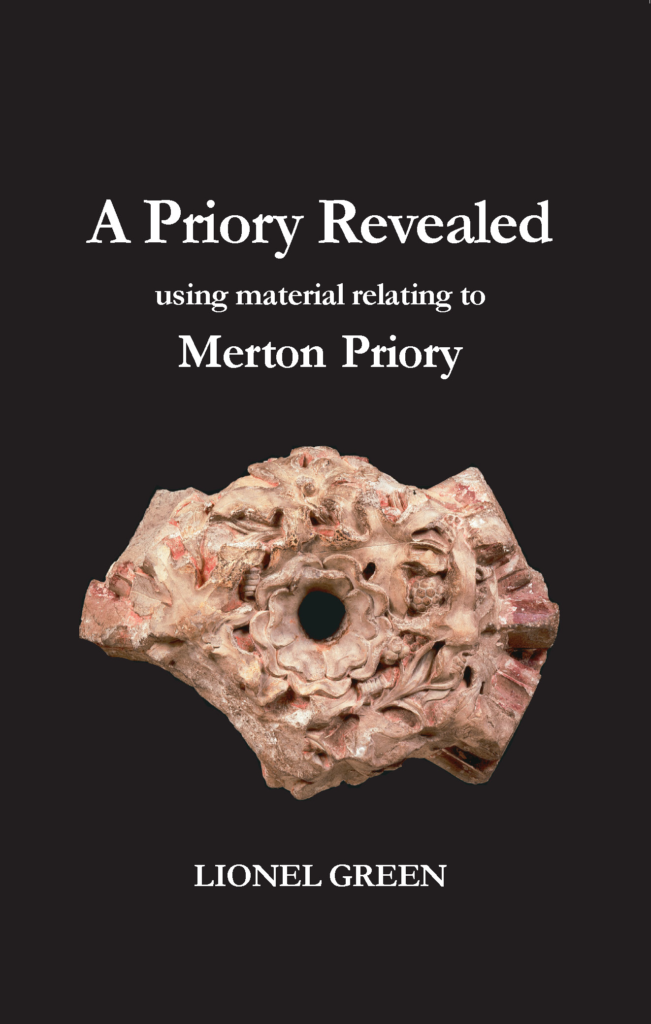
A Priory Revealed, which bears the subtitle – ‘using material relating to Merton Priory’ – draws upon a wide range of primary and secondary sources in order to describe, in a most accessible way, the organisation and life of not only Merton Priory, but Augustinian houses elsewhere in the British Isles. However, the focus of attention throughout the book is always on Merton, its buildings; its life; its organisation; its personalities; and the important part played by the priory on the national stage during the Middle Ages.
A Thirties Childhood in Mitcham
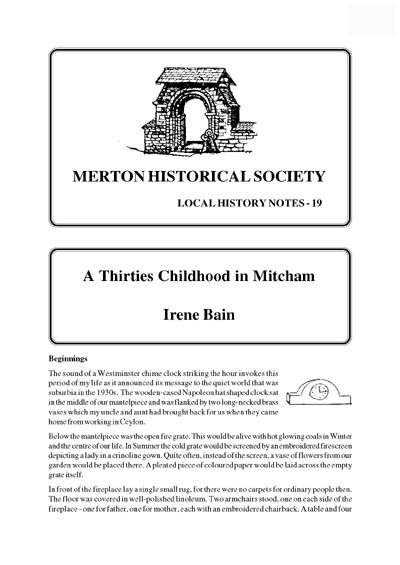
Irene Bain has already enthralled us with her Wartime Memories, published as Local History Notes 7. In this, her second set of reminiscences, she shares her recollections of her childhood – at home, at school, and out and about with family and friends.
A Walk around Merton Rush in the early 20th century

Cyril Maidment has collected photographs and views of all the old buildings that stood on the site of the Nelson Hospital and nearby, identifying the viewpoint of each one. Peter Hopkins has gone through the manorial court rolls to trace the history of each holding from the late 15th century to the 19th. Also included are a Vincent Lines article from a 1929 edition of Wimbledon Boro’ News, information from the 1891 and 1901 Censuses and local directories, as well as several maps.
Abbey Roads: a modern pilgrimage
When it dawned on Bill Rudd that most of the roads in the St Helier Estate in Morden and Carshalton were named after British monastic sites, he conceived the idea of visiting every one of these sites – 108 of them – photographing them and learning what he could about their histories. Abbey Roads, is Bill’s own account of his Project, which he based on his diaries and notes, and this has been illustrated with his fine photographs..
Abbotsbury Road (odd numbers)
A sequence from the 1970s starts with a photograph taken from the roof of Woolworths and another from the Co-op roof:
About the Society: Test layout
An Experimental House
Click on the Audio clip to discover more about the mystery building that occupied the site where the Assembly Rooms and Morden Park Baptist Church now stand, after The Kennels pig farm burnt down in 1937.
Anglo-Saxon sites in Merton (test page)
Ann Recalls Mr Hatfeild
Click on the Audio clip for Ann’s recollections of Mr Hatfeild’s children’s parties at Morden Hall.
Around Manor Road, Mitcham
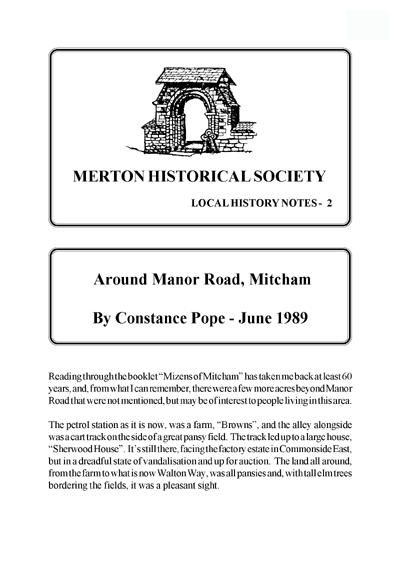
Constance Pope was born at 1 Willow Cottages, Mitcham in 1916, and has lived in the same house ever since. Her recollections of life around Manor Road in the 1920s reflect a way of life long gone, but still fresh in her memory.
Beating the Bounds:
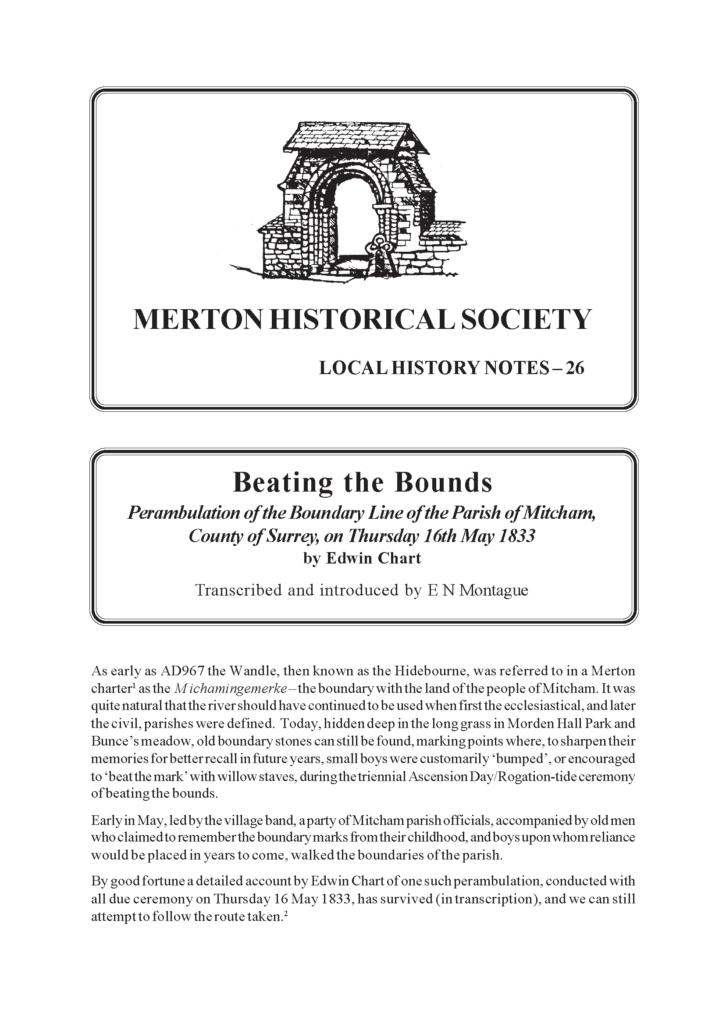
On Thursday 16 May 1833, led by the village band, a party of Mitcham parish officials, accompanied by old men who claimed to remember the boundary marks from their childhood, and boys upon whom reliance would be placed in years to come, walked the boundaries of the parish.
By good fortune a detailed account by Edwin Chart of this perambulation, conducted with all due ceremony, has survived (in transcription), and we can still attempt to follow the route taken.
Bill Rudd Archive
Bill Rudd Collection: Abbey Roads
Bill Rudd Collection: Excavations
Bill worked on several excavation sites within the Borough of Merton and beyond, and recorded much of these activities with his camera. He also made careful examination of trenches dug for other purposes and identified traces of the Roman road known as Stane Street in a Post Office Telephones service chamber in the public pavement of London Road near the old Lodge Cottage which stood in the grounds of the present college.
 MERTON HISTORICAL SOCIETY
MERTON HISTORICAL SOCIETY 